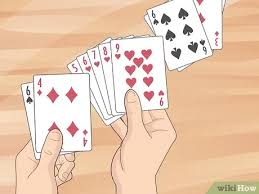Rummy End Of Game Rules, is a classic card game celebrated for its blend of skill, strategy, and chance. Whether played in its traditional form or one of its many variations, the conclusion of a rummy game involves specific rules that determine how the game ends and how scores are calculated. This article provides a detailed overview of the end-of-game rules in rummy, focusing on how to handle the final stages of play and calculate scores.
Basic End-of-Game Rules
In rummy, the end of the game is typically marked by a player’s declaration that they have formed valid melds with their cards. The specific rules and procedures for ending the game can vary depending on the version of rummy being played. Here’s a general overview of the common end-of-game rules:
- Declaring:
- A player declares the end of the game when they have successfully arranged all their cards into valid melds (sets and/or runs) and have discarded one final card.
- The declaration must be made according to the rules of the specific rummy variant being played.
- Revealing Melds:
- After a player declares, all players reveal their cards. The declaring player shows their melds and discards, while other players lay down their melds and reveal their remaining cards.
- Calculating Scores:
- Points for Melds: Cards that are part of valid melds are typically worth their face value and do not contribute to the final score.
- Penalty Points: Cards that are not part of any meld are considered deadwood and contribute to the player’s score. Penalty points are calculated based on the face value of these unmatched cards.
- Scoring Variations: Some rummy variants include additional rules for scoring, such as bonuses for specific types of melds or penalties for certain conditions.
- End-of-Game Conditions:
- The game ends when a player reaches a predetermined number of points, which may be set before the game begins. This number can vary depending on the version of rummy being played (e.g., 100, 250, or 500 points).
- In some variations, the game may end after a specific number of rounds, with the player having the lowest total score declared the winner.
Specific End-of-Game Rules by Rummy Variants
- Gin Rummy:
- Knocking: In Gin Rummy, a player declares by “knocking” when their deadwood is 10 points or fewer. After knocking, the opponent can lay down any melds and calculate the total points of their deadwood.
- Going Gin: If a player can form all 10 cards into melds with no deadwood, they go “Gin” and receive a bonus in addition to the points from their opponent’s deadwood.
- Indian Rummy:
- Declaring: In Indian Rummy, a player must form at least one pure sequence (a run without jokers) and additional valid melds to declare.
- Scoring: Points are calculated based on the remaining cards in the players’ hands. The game typically continues over several rounds until a player accumulates the target score.
- Oklahoma Rummy:
- Going Out: Similar to Gin Rummy, players can end the game by “going out” when they form valid melds and discard their final card. The game may also include additional rules for specific melds and scoring.
- Kalooki (Kaluki):
- Forming Melds: Players must form specific combinations of melds, including sequences and sets, to end the game.
- Scoring: The game includes detailed rules for calculating points and penalties based on the cards remaining in players’ hands.
Tips for Managing the End of the Game
- Plan Your Declares:
- Aim to declare as soon as you have formed your melds and have a low value of deadwood. This minimizes your penalty points and increases your chances of winning the round.
- Observe Opponents:
- Pay attention to your opponents’ actions and discard patterns. This information can help you anticipate their moves and make strategic decisions about your own hand.
- Manage Deadwood:
- Try to minimize the value of deadwood throughout the game. The fewer unmatched cards you have when someone declares, the lower your penalty points will be.
- Adapt Your Strategy:
- Adjust your strategy based on the game’s progress and the number of rounds played. If you’re trailing, consider taking more risks to catch up.
Conclusion
The end-of-game rules in rummy are crucial for determining the outcome and ensuring fair play. Whether you’re playing Gin Rummy, Indian Rummy, or any other variant, understanding the rules for declaring, revealing melds, and calculating scores is essential for a successful and enjoyable game. By mastering these end-of-game procedures and applying strategic thinking, players can enhance their rummy skills and increase their chances of winning in various rummy formats.




